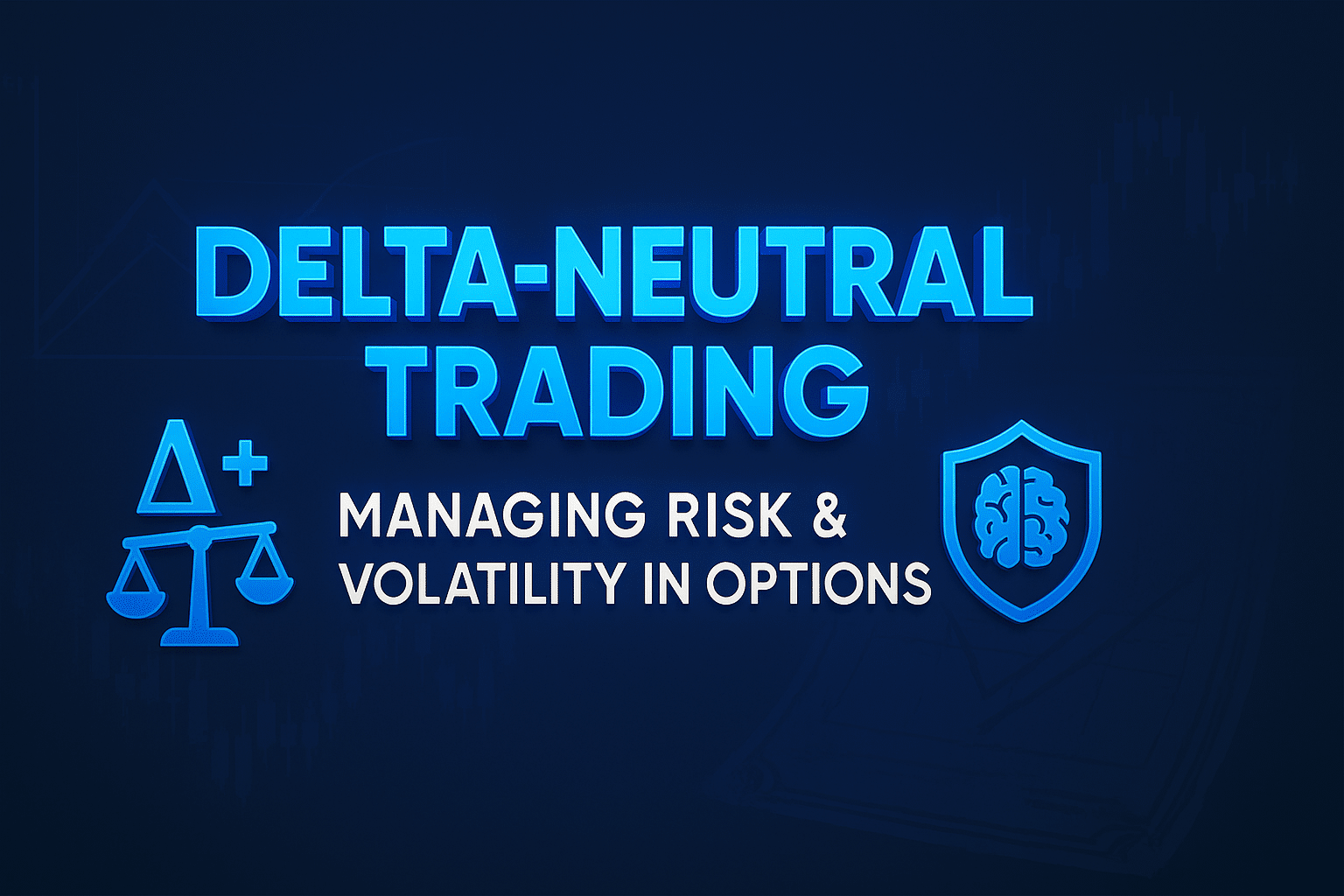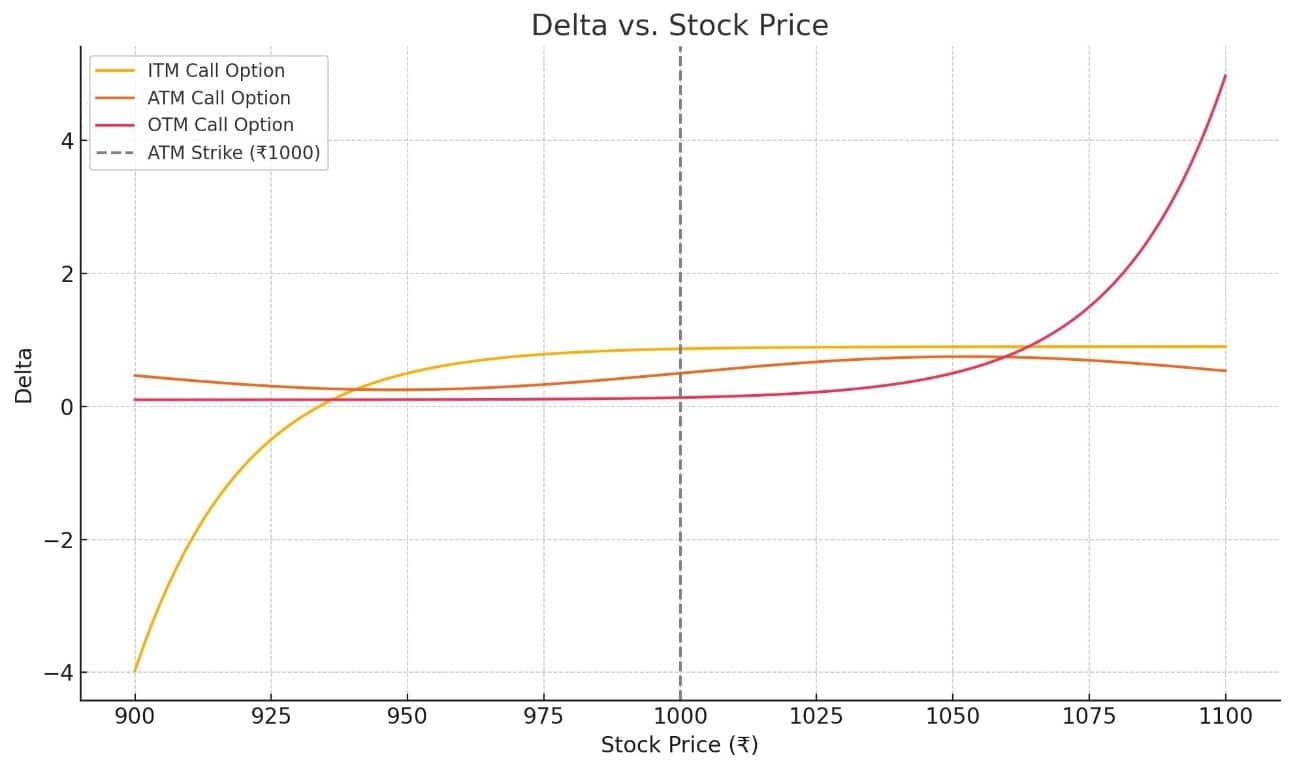How Delta-Neutral Trading Helps Options Traders Manage Risk and Volatility?
Post Date : July 10, 2025

Managing risk is fundamental to trading and investing. Among the sophisticated techniques used by options traders, delta-neutral strategies stand out as a core method for reducing exposure to price fluctuations in underlying assets. This article provides a comprehensive yet accessible explanation of what delta-neutral trading means, how it works in practice, and its advantages and drawbacks.
What is a Delta-Neutral Strategy?
A delta-neutral strategy seeks to balance positive and negative deltas across a portfolio so that the net delta is effectively zero. In simple terms, the goal is to ensure that small price movements in the underlying asset do not significantly impact the overall value of the portfolio.
To understand why this matters, one must first grasp the concept of delta itself. Delta is one of the key “Greeks” in options trading. It measures the sensitivity of an option’s price to changes in the price of the underlying asset.
For example, a call option with a delta of 0.25 implies that for every ₹1 increase in the underlying asset’s price, the option’s price is expected to increase by ₹0.25.
Positive, Negative, and Neutral Delta
Depending on the positions held, a portfolio can be:
- Positive Delta: The portfolio benefits when the underlying asset price rises. This is typical for long call options or long stock positions.
- Negative Delta: The portfolio benefits when the underlying asset price falls. This often results from holding long put options or shorting stocks.
- Neutral Delta: Gains or losses from small price movements in the underlying asset are offset, keeping the portfolio stable.
Traders who pursue delta neutrality aim to eliminate directional risk, allowing them to focus on other factors, such as time decay (theta) or changes in implied volatility (Vega), which also significantly influence options pricing.
How Delta-Neutral Strategies Work?
Consider the following example:
Suppose a trader owns a long position of 200 shares in Company X, each trading at ₹100. This position carries a total delta of +200. If the trader wishes to hedge against short-term downside risk while retaining long-term exposure, they could purchase put options to offset this positive delta.
Assuming an at-the-money put option on Company X has a delta of -0.50, buying one contract (representing 100 shares) would contribute -50 delta to the portfolio. To neutralize a +200 delta position, the trader would purchase four such put contracts:
Total delta of puts = 4 × (-0.50 × 100) = -200
The net delta of the combined position becomes zero:
+200 (stock) + (-200) (puts) = 0
In this delta-neutral position, small price movements in Company X’s stock price will not substantially affect the overall portfolio value. However, this balance is not permanent. As the stock price moves, the delta of the options changes due to a factor known as gamma, necessitating periodic adjustments—a process known as dynamic hedging.
Likewise, if an option has a delta of zero and the share price increases by ₹1, the option’s price remains unaffected (typical of deep out-of-the-money call options). If an option has a delta of 0.5, its price will increase by ₹0.50 for every ₹1 increase in the underlying share price. This is calculated as follows:
₹1 price change × delta of 0.5 = ₹0.50 change in option price
Instruments Used in Delta-Neutral Hedging
Delta-neutral strategies can involve various combinations:
- Stock and Options: As in the example above, owning shares while holding options positions to offset delta exposure.
- Calls and Puts: Traders might combine calls and puts to create neutral exposure. For instance, buying a call with a delta of +0.50 and a put with a delta of -0.50 can yield a net zero delta, known as a straddle.
- Synthetic Positions: Traders may construct synthetic positions mimicking the payoff of another instrument to achieve delta neutrality.
These strategies enable traders to isolate and speculate on non-directional factors such as volatility or time decay without taking a directional view on the underlying asset.
Benefits and Challenges of Delta-Neutral Strategies
Advantages:
- Reduces exposure to small price fluctuations in the underlying asset.
- Enables traders to profit from other variables like volatility changes or time decay.
- Offers flexibility in managing complex portfolios.
Drawbacks:
- Requires ongoing monitoring and adjustments due to gamma risk.
- May incur significant transaction costs from frequent rebalancing.
- Large, unexpected market moves can still expose the trader to risks beyond the neutralized range.
Delta Hedging as a Risk Management Tool
Delta hedging specifically refers to the process of adjusting a portfolio’s positions to maintain a delta-neutral state. For instance, if the underlying asset rises, the delta of the options in the portfolio may increase, requiring the trader to sell shares or buy additional options to bring the net delta back to zero.
This is not merely a one-time adjustment but a continuous process. Delta is a dynamic measure, and maintaining neutrality can be demanding both operationally and financially.
Profit Potential in Delta-Neutral Trading
While delta-neutral strategies can shield traders from price movements, they are not purely defensive tools. Many traders use these techniques to:
- Capture profits from time decay as options lose value over time.
- Exploit anticipated changes in implied volatility.
- Manage complex multi-leg options trades where directional exposure is undesirable.
For instance, a trader might sell an options straddle (selling both a call and a put at the same strike price) in anticipation of low volatility. In such a trade, being delta neutral initially ensures that small market movements do not erode the position’s profitability while the trader earns the premium from time decay.
Final Thoughts
Delta-neutral strategies represent one of the most significant tools in the arsenal of advanced options traders. By balancing positive and negative deltas, traders can manage risk, focus on volatility opportunities, and navigate complex market conditions.
However, delta neutrality is not a set-and-forget solution. Market movements, volatility changes, and the passage of time all influence a portfolio’s delta, demanding careful attention and dynamic management.
For traders willing to commit the time and resources required, delta-neutral strategies offer both powerful hedging capabilities and sophisticated avenues for non-directional profits.
For more information, contact RMoney at 0562-4266600 / 0562-7188900 or email us at askus@rmoneyindia.com
Disclaimer:-Investments in the securities market are subject to market risks. This content is for Educational purposes only and does not constitute financial advice.

Stock Trading Now trade in ₹9 Per Order or ₹ 999 Per Month Plans.
Future & Options Access F&O contracts with advanced tools for hedging and speculation.
Currency Trading Trade in major currency pairs and manage forex exposure efficiently.
Commodity Trading Diversify Trading with MCX & NCDEX by Trading in Gold, Silver, Base Metals, Energy, and Agri Products.
Margin Trading Funding Boost your buying power with upto 5X, Buy now Pay Later
Algo Trading Back test, Paper Trade your logic & Automate your strategies with low-latency APIs.
Trading View Leverage Trading View charts and indicators integrated into your trading platform.
Advanced Options Trading Execute multi-leg option strategies with precision and insights.
Stock Lending & Borrowing Earn passive income by lending stocks securely through SLB.
Foreign Portfolio Investment Enable NRIs and FPIs to invest in Indian markets with ease and compliance.
IPO Invest in upcoming IPOs online with real-time tracking and instant allotment updates.
Direct Mutual Funds 0% Commissions by investing in more than +3500 Direct Mutual Fund Scheme.
Corporate FDRs Earn fixed returns with low-risk investments in high-rated corporate fixed deposits.
Stocks SIPs Build long-term wealth with systematic investment plans in top-performing stocks.
Bonds & NCDs Access secure, fixed-income investments through government and corporate bond offerings.
Depository Services Safely hold and manage your securities with seamless Demat and DP services with CDSL.
Journey Tracing our growth and milestones over time.
Mission & Vision Guided by purpose, driven by long-term vision.
Why RMoney Platform Smart, reliable platform for all investors' needs.
Management Experienced leadership driving strategic financial excellence.
Credentials Certified expertise with trusted industry recognition.
Press Release Latest company news, updates, and announcements.
Testimonials Real client stories sharing their success journeys.
7 Reasons to Invest Top benefits that make investing with us smart.
SEBI Registered Research Trusted insights backed by SEBI-compliant research.
Our Technology Advanced tools enabling efficient online trading.
Calculators Access a suite of smart tools to plan trades, margins, and returns effectively.
Margin Calculator Instantly check margin requirements for intraday and delivery trades.
MTF Calculator Calculate MTF funding cost upfront to ensure full transparency before placing a trade.
Brokerage Calculator Know your exact brokerage charges before placing any trade.
Market Place Explore curated investment products and trading tools in one convenient hub.
RMoney Gyan Enhance your market knowledge with expert blogs, videos, and tutorials.
Performance Tracker Track our research performance with full transparency using our performance tracker.
Feedback Share your suggestions or concerns to help us improve your experience.
Downloads Access important forms, software, and documents in one place.
Locate Us Find the nearest RMoney branch or service center quickly.
Escalation Matrix Resolve issues faster with our structured support escalation process.
Back Office Log in to view trade reports, ledger, and portfolio statements anytime.
Account Modification Update personal or bank details linked to your trading account.
Fund Transfer Transfer funds instantly online with quick limit updation to your trading account.
Bank Details View our registered bank account details for seamless transactions by NEFT, RTGS or IMPS.
How to Apply IPO Step-by-step guide to apply for IPOs using your trading account.
RMoney Quick Mobile App Trade on-the-go with our all-in-one mobile trading app.
RMoney Quick login Quickly access your trading account through the RMoney Quick web-based trading.
RMoney Rocket Web Version Experience powerful web-based trading with advanced tools for algo traders.
RMoney Rocket Mobile Version Trade anytime, anywhere with our feature-rich mobile trading platform.














